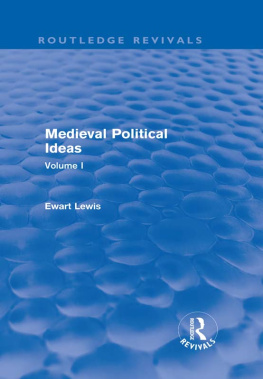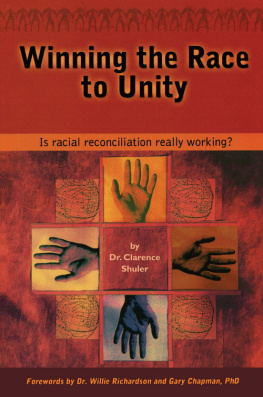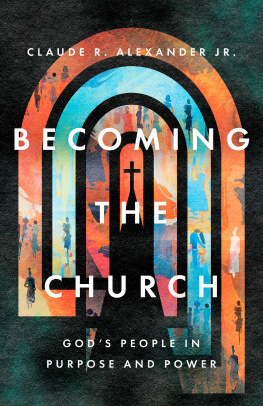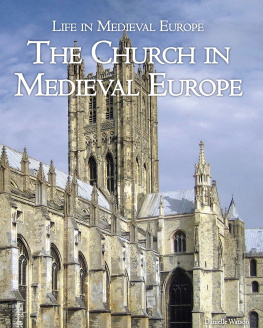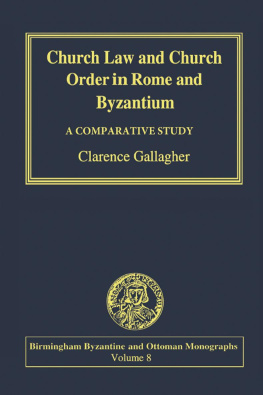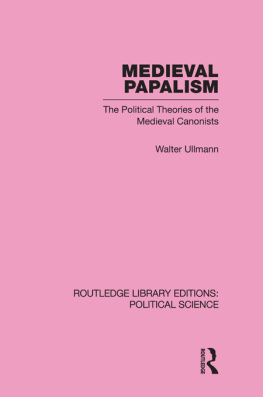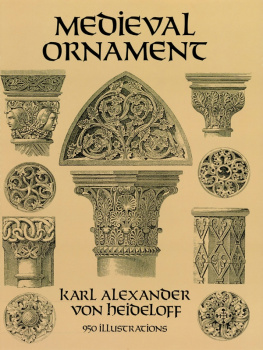AT the end of the thirteenth century the ecclesiastical empire of Rome was the widest in territorial extent that up to that time had been obtained under any of the Pontiffs. With the exception of southern Spain, the Pope's rule was unquestioned throughout all Central and Western Europe. At the same time plans were being made continually to recapture the places lost in the East. Not only were overtures for unification made with the Armenians, the Russians, and the Greeks; but missionaries were also sent to labour among the Mongols, the Mohammedans, the Persians, and the Chinese. Meanwhile the obligation to wage a holy crusade against all infidels and heretics was ever kept vividly before the imaginations of the Christian princes.
Under the great Pope Innocent III (d. 1216) and his sixteen successors in the thirteenth century, upon the accession of Boniface VIII in the year 1294, the Medieval Church had attained the extreme limits of its power. Its dogma had been elaborated and accepted; its canon law had been developed and generally enforced; its hierarchical machinery for governmental purposes had been completed and was in full operation. The complete sway of the papal monarchy over the Church had been universally recognized and the right of the Pope to interfere in the affairs of the European States had been established. To enforce these pretensions a veritable papal army, both priestly and monkish, covered Christendom to carry out the Pope's will and to compel obedience to it. Thus the Papacy with the finest organization since the days of Rome, defended by the keenest intellects of the Middle Ages, in possession of a powerful army obedient to every demand, with frightened princes ready to draw the sword for its defence against all enemies, internal or external, and with the credulous and intensely religious masses accepting its claims and prerogatives, was unquestionably the dominant power in European civilization in the thirteenth century.
The fact must be kept clearly in mind that during the thirteenth century the Roman Church consciously perpetuated the Imperial Roman Empire and sought to exercise its prerogatives to the point of monopoly. The theological literature of the day was full of illustrations of the Church as the lord, the soul, and the sun, while the State was the servant, the body, and the moon. As a result the century was replete with conflicts between the papal and secular powers, and, with the fall of the Hohenstaufen house, ended in the triumph of the papal hierarchy. Papal supremacy was well nigh undisputed The kingdoms of Aragon, Portugal, Sicily, and England were papal fiefs; a Latin Empire had been established at Constantinople; the Armenians bowed to the authority of the Pope; France and Germany were submissive. The Pope, changed from the vicar of Peter to the vicar of Christ on earth, had become the real Roman Emperor, and held the law and peace of the world in his hand.
Furthermore, to keep the masses of the laity steady in their faith and loyal to the Church, the greatest emphasis was laid on the religious observance of the rites and ceremonies of the Church. The seven sacraments, by this time completely elaborated and ably defended, covered the whole span of human life from the cradle to the grave, while the laity were taught that only through their efficacy could salvation be assured. Transubstantiate, the miraculous mystery of mysteries, whose possession seemed in itself to be a positive guarantee of the truth of Christianity and of the divine nature of the Church, had been accepted as a dogma since the pontificate of Innocent 111. The rapid growth in this traffic was due to three important changes: (1) the theory of the treasury of the merits; (2) the development of the institution into the sacrament of penance; and (3) the recognition of a new type of repentance called attribution. Alexander of Hales about 1230 first formulated the theory of the treasury and Clement VI confirmed it in 1450. The worship of Mary, the veneration of saints, and the use of relics were developed to a point where they played an important rle in the religious life of the period.
It must not be forgotten either that, along with its activities in many fields, the Church was deeply interested in soul-saving. The Begging Orders, which originated at the beginning of the thirteenth century, made such a propagandism their businessso much so indeed that the priests complained to the Pope about their encroachments. Preaching by the secular clergy was very common and much of it of a deeply pious character. The wicked were urged to repentance for their evil deeds, and were exhorted to shun the power of the devil over their souls. There existed throughout the Church generally a terrific religious fervourin part a resultant of the crusades and in part a product of the activity of the Begging Orderswhich found expression in reputed miracles, in visions and direct divine revelations, in conflicts with the devil, in ecstatic experiences and stigmatizations, in flagellations, and other pious excesses, in various types of mysticism, and in many other peculiar phases and manifestations of fanatic piety.
On the surface of things, and to the short-sighted medieval ecclesiastical opportunist, it looked as if the papal system was everywhere triumphant. But certain forces were already appearing in Western Europe to dispute the lofty and sweeping claims of the Papacy and to weaken the tremendous power wielded by the head of the Roman Church. The causes which were undermining hierarchical authority and pretensions at this time were political, intellectual, economic, and social.
The power of the Medieval Church was due in a large measure to the absence of efficient secular rulers backed up by loyal subjects and an adequate military force. During the period of feudal anarchy the Church easily assumed the functions of the State in maintaining order, in administering justice, in caring for the unfortunate, and in encouraging industry and learning. Nor can anyone gainsay the invaluable service it rendered in these important fields. On the other hand, when the modern national states like France and England began to emerge and felt able to manage their own affairs, to protect their subjects in life and property, and to mete out justice, they attempted to make themselves politically independent of the clergy and the Pope. Educated laymen and civil lawyers became more numerous and gradually replaced the churchmen as counsellors and assistants to royalty. The rise of the national state and the new system of political science on which it rested, together with the able publicists who so successfully defended it, mark a most significant transition from the medieval era to the modern period in the history of Western Europe. This new force not only challenged the Validity of the ground taken by Gregory VII and Innocent III in asserting and establishing the supremacy of the Papacy, but it was also largely instrumental in disrupting the feudal system which so generally determined the social, industrial, and political relations of men, and likewise powerfully augmented the hierarchical assumptions of the Roman Church.



